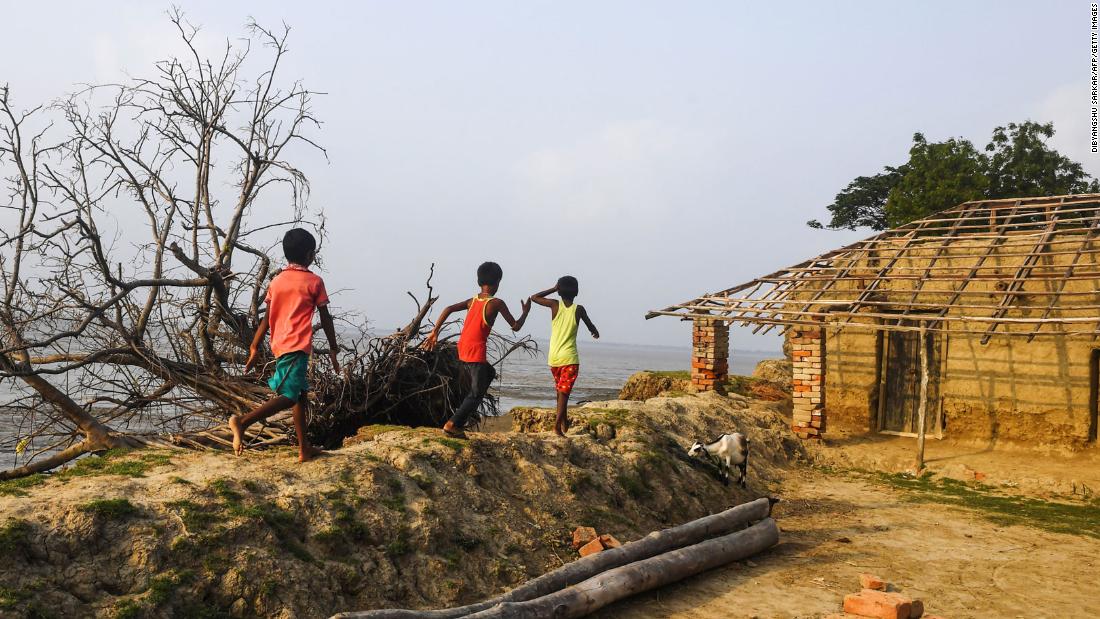For thousands of years, humans have lived in a narrow “climatic niche” where average temperatures are ideal for making society prosper and favorable conditions for growing food and keeping livestock.
In the results published in the Proceedings of the National Academy of Sciences on Monday, an international team of archaeologists, climate scientists and ecologists said that if greenhouse gas emissions trapped in heat continue at the current rate, by 2070 billion people will live in warmer conditions. of those that have allowed life to thrive in the past 6,000 years.
Tim Kohler, an archaeologist at the University of Washington and co-author of the study, said that these findings can be seen as the worst case or “business-as-usual” scenario of “what could happen if we didn’t change our habits”.
Temperatures change more than in the past 6,000 years
Using data on historic global temperatures and the distribution of human populations, researchers found that just like other animal species, humans thrive best in a tight “climate envelope” around the world.
The majority of the world’s population lives in areas with an average annual temperature between 11 and 15 degrees Celsius (51.8 to 59 degrees Fahrenheit). A smaller band between 20 and 25 ° C (68 to 77 ° F) includes areas of South Asia affected by the Indian monsoon – the annual rains that irrigate large areas of land vital for food production.
“As an archaeologist I always tell my students that our technology, our minds and our cumulative culture have allowed us to live everywhere,” said Kohler. “This is true, of course. But it turns out that there is a distinct climate zone where our number is greater and within which we have also been economically more productive.”
But the change could soon be imposed on us.
As our planet quickly overheats due to rising emissions, the study found that the temperature experienced by an average person is expected to change more in the coming decades than the past 6,000 years.
“It is reasonable to conclude that if something has been reasonably stable for 6000 years, we will not change it painlessly or quickly,” said Kohler.
The areas of extreme heat will expand
Among the hottest places on Earth is the Sahara region in Africa, which has average annual temperatures above 29 ° C (84.2 ° F). These extreme conditions cover 0.8% of the Earth’s surface.
However, the researchers said these extreme heat areas are expected to spread to 19% of the Earth’s surface, affecting 3.5 billion people by 2070.
Regions to be affected include parts of sub-Saharan Africa, South America, India, Southeast Asia, the Arabian Peninsula and Australia – regions with rapidly growing populations, said Chi Xu of the School of Life Sciences of the University of Nanjing, and another co-author of the report.
“These countries are mainly found in the southern hemisphere, with the fastest growing population, such as India and Nigeria. These two countries are designed to accommodate larger populations in extreme temperature conditions,” said Chi .
It is a terrible warning of what could happen if the climate crisis were left unchecked.
But there is hope. Scientists said that by rapidly and substantially reducing global carbon emissions, the number of people exposed to brutally hot conditions could be halved.
The authors explain that there are a number of uncertainties about how the climate crisis will fuel displacement and to what extent, and have argued that the study cannot be used as a prediction of migration.
The figures are also based on worst-case projections and there are doubts about how actions to mitigate climate change, including “political developments, institutional changes and socio-economic conditions” can influence these results.
“The worst case scenario can be largely avoided if an effective cut in greenhouse gas emissions is achieved,” said Chi. “Many effective climate mitigation and local adaptation measures would help alleviate the negative influence of climate change on human societies.”

Coffee enthusiast. Travel scholar. Infuriatingly humble zombie fanatic. Thinker. Professional twitter evangelist.








